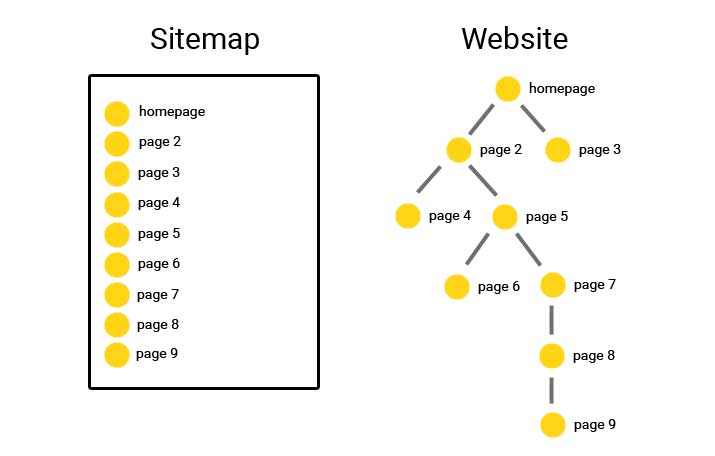An XML sitemap is a file that lists all the pages on a website and provides search engines with valuable information about the website’s structure and content. It is designed to help search engine crawlers understand a website’s organization and crawls its pages more effectively.
XML sitemaps are primarily created for search engines, such as Google, Bing, and Yahoo, to discover and index the pages of a website quickly. By submitting an XML sitemap to search engines, website owners provide search engines with a comprehensive list of URLs to crawl.
What is an XML Sitemap?
XML sitemaps are written in XML (Extensible Markup Language), a markup language that uses tags to structure and define the data within the file.


XML sitemaps help search engines understand the priority and relevance of different pages on a website. By including additional information such as the last modification date, change frequency, and priority of each URL, website owners can guide search engines in prioritizing the indexing of certain pages.
XML sitemaps are particularly useful for websites with a large number of web pages, dynamically generated content, or pages with limited internal linking. They ensure that search engines can discover and crawl all the pages, including those that might not be easily reached through regular navigation.
Using an XML sitemap gives website owners greater control over which pages are crawled and indexed by search engines. This can help improve the visibility of important pages and ensure that the most relevant and up-to-date content is included in search engine results.
For larger websites, it’s possible to have multiple XML sitemaps, each containing a subset of the website’s URLs. This approach allows for better organization and management of the sitemap files.
How to Submit an XML Sitemap?
To submit an XML sitemap to search engines, follow these steps:


- Generate an XML sitemap: Use a sitemap generator tool or a content management system (CMS) plugin to create an XML sitemap for your website. Ensure the sitemap includes all the relevant pages you want search engines to crawl and index.
- Verify your website ownership: To submit an XML sitemap, verify your website ownership in the respective search engine’s webmaster tools. The verification process varies depending on the search engine. For Google, you can use Google Search Console, while Bing has its own Bing Webmaster Tools.
- Sign in to the webmaster tools: Sign in to the webmaster tools provided by the search engine to which you want to submit your XML sitemap. If you haven’t already, create an account and add your website as a property.
- Add and verify your website: Follow the instructions provided by the webmaster tools to add and verify your website. This typically involves adding a verification code or meta tag to your website’s HTML or DNS settings.
- Locate the sitemap submission section: Once your website is verified, find the sitemap submission section within the webmaster tools. In Google Search Console, it’s called the Sitemaps section, while in Bing Webmaster Tools, it’s called the “Sitemaps” or Submit Sitemap section.
- Submit the XML sitemap: In the sitemap submission section, enter the URL of your XML sitemap. It should be in the format http://www.mohitbahl.com/sitemap.xml (replace www.mohitbahl.com with your website’s domain). Submit the sitemap using the provided option or button.
- Monitor sitemap indexing: After submitting the XML sitemap, the search engine will start processing it. Monitor the webmaster tools to check your sitemap’s status and indexing progress. It may take some time for search engines to crawl and index all the URLs in your sitemap.
- Update and resubmit: If you make significant changes to your website’s content or structure, update your XML sitemap accordingly and resubmit it through the webmaster tools. This helps search engines discover the changes and update their indexes accordingly.
Remember to keep your XML sitemap up to date as you add or remove pages on your website. Regularly review your sitemap and ensure it reflects your website’s current structure and content.
Note that the process and terminology vary slightly between search engines and their webmaster tools. Always refer to the specific instructions and guidelines provided by the respective search engine’s webmaster tools for accurate and up-to-date information on submitting XML sitemaps.
It’s important to note that while XML sitemaps provide valuable information to search engines, they don’t guarantee that all submitted pages will be indexed or rank highly in search results.
Search engines still consider various factors, such as content quality, relevance, and external signals, when determining the ranking and visibility of web pages.





